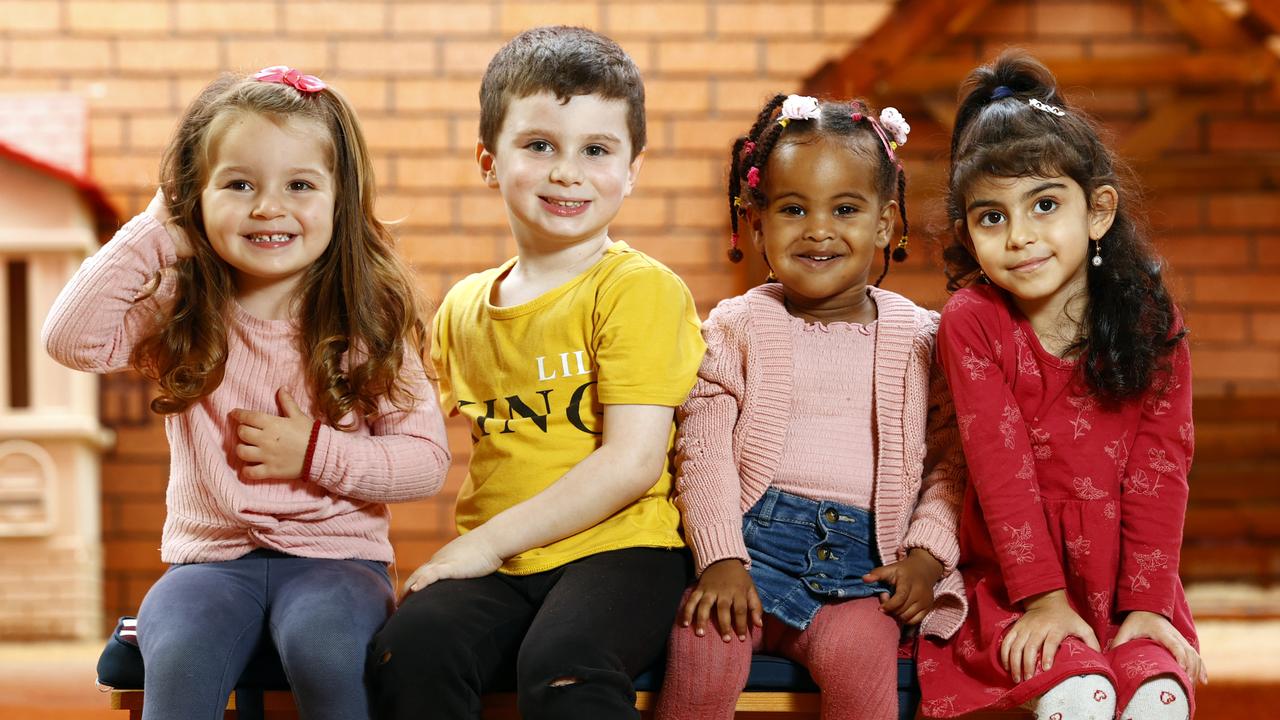NSW childcare crisis laid bare: Worst suburbs revealed
Western Sydney families are living in a “childcare desert” with only one place for every seven children in some areas, as operators warn soaring land and staff costs are barriers to opening more facilities. Search your suburb.
NSW
Don't miss out on the headlines from NSW. Followed categories will be added to My News.
Western Sydney families are living in a “childcare desert” with only one place in a centre for every seven children in some areas, as operators warn soaring land and staff costs are barriers to opening more facilities.
There are about three kids living in parts of Sydney like Fairfield, Liverpool and Campbelltown per place in a child care centre compared to about 1.9 in suburbs like Warringah, Ryde and Baulkham Hills, new research from the Mitchell Institute and Victoria University has showed.
The report mapped childcare centre places in 2021 against census data in 2016, and found while Western suburbs fare the worst in the city, regional areas were not faring any better.
Though about 816,000 Australian kids are in centre based childcare care, there are a further 95,000 in family day care, which were not captured in the report.
Despite excluding this sector, which is used by about 28 per cent of families in regional areas with kids in care, researchers have warned there still is a problem with demand for centre care outweighing supply.
The biggest ratio in the state was Broken Hill with 7.91 children per single childcare place, while the Hawkesbury region was the worst in Sydney with 7.16 children per place.
Researchers defined a childcare “desert” as an area where there’s at least three children for one centre place.
Regional areas like Inverell, Upper Hunter, Richmond Valley, Armidale and Griffith all had a ratio of above four children to one childcare centre place, while Blacktown, Bankstown, Fairfield, and Auburn were among the Sydney areas above a ratio of three.
Labor’s childcare spokesman Amanda Rishworth said the report “shines a light” on the important issue of access to care.
“Not all families have access to quality early learning,” she said.
Australian Childcare Alliance vice president Nesha Hutchinson, who owns and operates two centres in Sydney, said the report assumed every child required childcare services in the years before school, which was not the case for all families.
“That there are children in the area means there is demand is false,” she said.

Despite misgivings about the findings, Ms Hutchinson said there were considerable structural barriers to ensuring childcare providers could meet demand that could be better dealt with.
“The biggest costs are staff, and we know there’s a workforce shortage so we have to pay staff more which results in higher costs to families. Also, land prices impact rent or mortgages, and we know that’s been a huge factor during the pandemic,” she said.
“One of the ways you can overcome some of these barriers is for local councils to make suitable sites available so operators could develop a financially sustainable site”
Ms Hutchinson said all operators, whether private or not-for-profit, needed to be able to run “financially viable” centres, which meant hitting the “sweet spot” to balance rent and staff costs with fees charged to families.
“Staffing ratios are important to ensure the health and safety of children, but … you have to ensure the centre is viable,” she said.
“For example with children over three the ratio is one staff member to ten children.
“If you have 10 children in that age group that’s perfect, but if you have 13 then suddenly you’re dividing the cost of two staff among those families.”
Acting Education Minister Stuart Robert said the government was invested in increased access to child care for families in regional and remote areas with $19.4 million to support the establishment of up to 20 new services.
“The funding will target regional areas in need,” he said.
“This builds on grants to more than 1,000 services in vulnerable and disadvantaged communities in largely regional and remote locations.”
Of the 824 services receiving support form the Community Child Care Fund, 65 per cent are in regional and remote Australia.
New mum Dr Rosie Hanbury has recently returned to work four days a week at Mittagong MedicalCentre, but she is worried she may have to cut down on work if she’s unable to access childcare.
“As a local GP, patients can’t get to see me (during the shorter week) and I want to be available for them, but I can’t get anyone to look after my baby,” she said.
Dr Hanbury put her son’s name on the waitlist for a number of preschools nearly ten months ago, but he is yet to be placed.

“Anecdotally, it’s an issue for everyone I’ve spoken to,” she said.
Dr Hanbury said the lack of childcare in the Southern Highlands was very concerning.
“It’s crazy that they’re not able to offer any certainty, which isn’t their fault, but it’s a flawed system,” she said.
“If you have a child, you basically have to put their name down the second you find out you’re pregnant.”
More Coverage
Originally published as NSW childcare crisis laid bare: Worst suburbs revealed








